by hankinslawrenceimages | Oct 17, 2011 | Flowers, Wildflowers
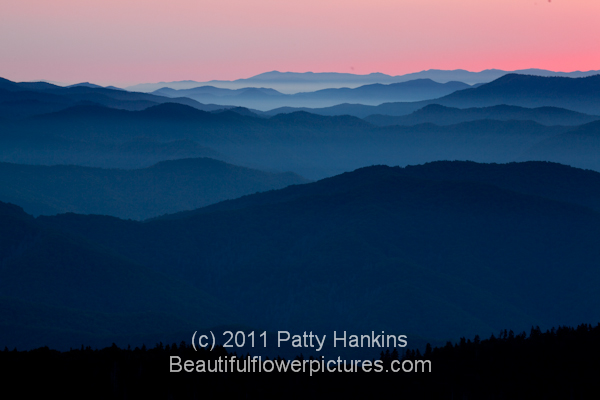 Sunrise at Clingman’s Dome, Great Smoky Mountains National Park © 2011 Patty Hankins
Sunrise at Clingman’s Dome, Great Smoky Mountains National Park © 2011 Patty Hankins
I spent an amazing five days photographing in the mountains of Tennessee last month. While I have visited and photographed in the Smoky Mountains several times in the past few years, this was my first late summer visit. What I discovered was incredible sunrises after 7 AM, peaceful streams, different wildflowers than I’ve seen in the past, and no crowds. The Great Smoky Mountains National Park is the most visited park in the National Park System, so finding a time of year when it isn’t very crowded was wonderful!
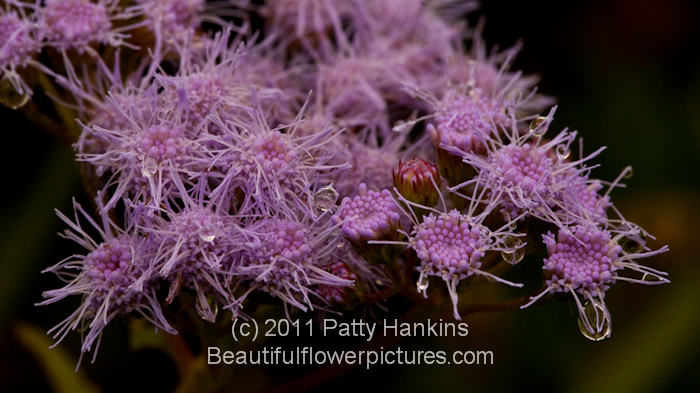
Mistflower © 2011 Patty Hankins
Since the park was so quiet, I was able to sit by a stream for an hour – just reading a book and relaxing. Another day, I spent a couple of hours in just one corner of a field at Cades Cove – photographing wildflowers and watching the deer across the road.
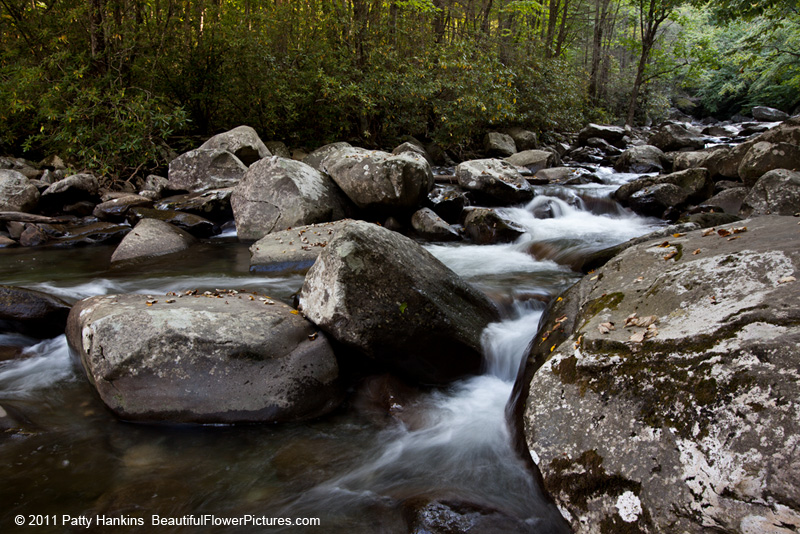 Little Pigeon River, Great Smoky Mountains National Park © 2011 Patty Hankins
Little Pigeon River, Great Smoky Mountains National Park © 2011 Patty Hankins
In addition to my time in the National Park, I spent a day exploring the Cherokee National Forest with a friend. We drove for hours on the forest roads, stopping to photograph when something caught our eye. It was one of the best days I’ve had photographing in a very long time.
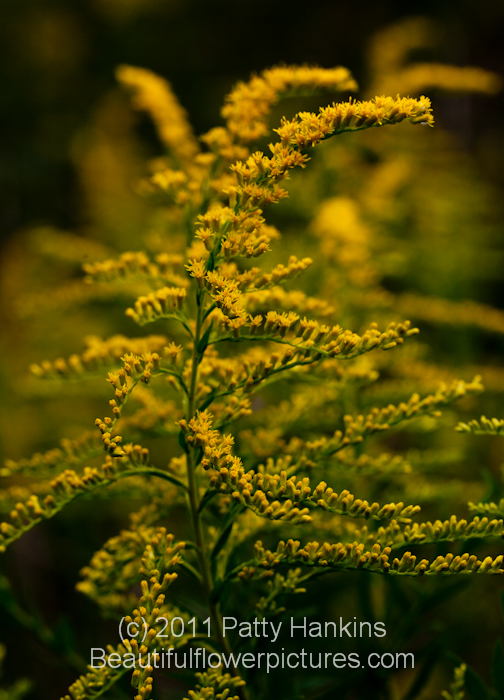 Canada Goldenrod © 2011 Patty Hankins
Canada Goldenrod © 2011 Patty Hankins
What I realized on this trip is how important it is to just slow down and enjoy where I found myself. Usually when I’m on a photo trip I’m in a hurry because I don’t want to miss anything – wondering what if an unknown wildflower is just around the bend. I had a wonderful time – I may have missed seeing a few things because of the slower pace of this trip. But that’s OK – because I thoroughly enjoyed seeing what was around me.
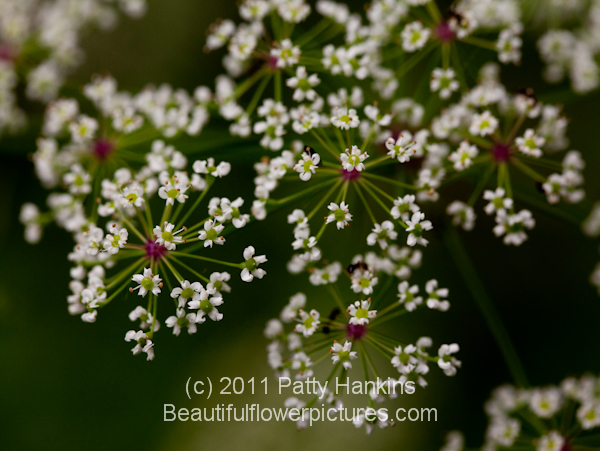 Hemlock © 2011 Patty Hankins
Hemlock © 2011 Patty Hankins
Next time you head out into nature – whether it’s somewhere familiar – or somewhere new – how about trying what I discovered this trip. Slowing down and completely experiencing where you are and what you are seeing can be incredible.
by hankinslawrenceimages | Dec 14, 2009 | Flowers, Wildflowers
One of my favorite summer wildflowers is the Cardinal flower (lobelia cardinalis). I just love the bright red flowers. They add a great splash of color in late summer and early fall.
This year, I photographed Cardinal flowers in two locations. The first was a single cardinal flower along the Little Brier Gap Trail in the Great Smoky Mountains National Park in late July. This was the only Cardinal flower I saw on my summer trip along the Blue Ridge Parkway and in the Smokies.
 (c) 2009 Patty Hankins
(c) 2009 Patty Hankins
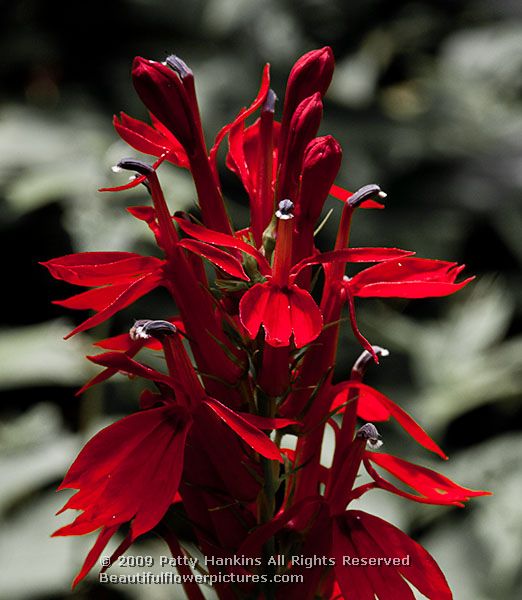 (c) 2009 Patty Hankins
(c) 2009 Patty Hankins
A few weeks later, I found one more Cardinal flower at the Wild Gardens of Acadia in Maine’s Acadia National Park.
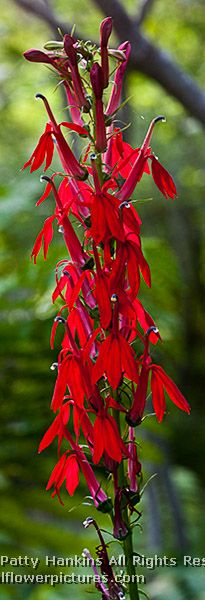 (c) 2009 Patty Hankins
(c) 2009 Patty Hankins
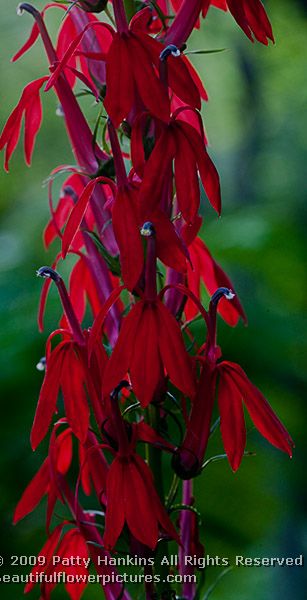 (c) 2009 Patty Hankins
(c) 2009 Patty Hankins
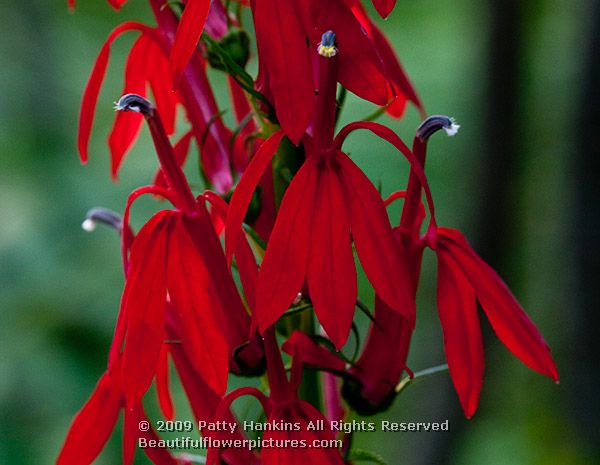 (c) 2009 Patty Hankins
(c) 2009 Patty Hankins
I’m hoping that next summer I’ll be able to find a group of Cardinal flowers growing together. I suspect that would make a fantastic photograph.
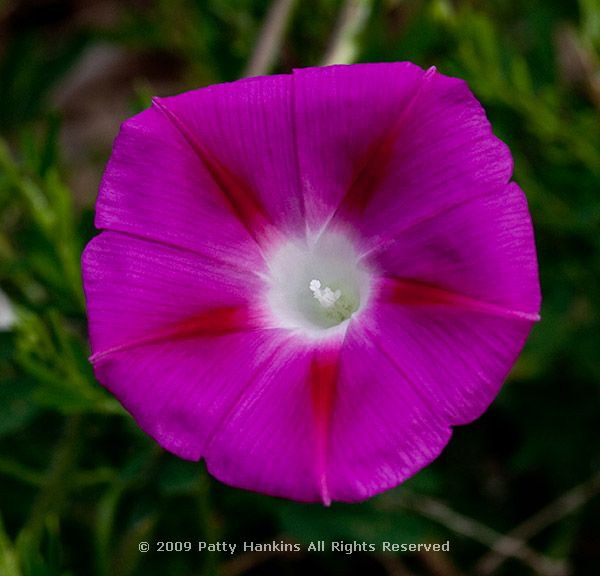
by hankinslawrenceimages | Aug 6, 2009 | Flowers, Wildflowers
I recently photographed two members of the Convolvulacae family – the bindeweed or morning glory family – in North Carolina and Tennessee. These plants are known for their funnel shaped flowers.
The first flower I photographed was a purple tall morning glory (ipomoea purpurea) at the North Carolina Arboretum in Asheville, North Carolina.
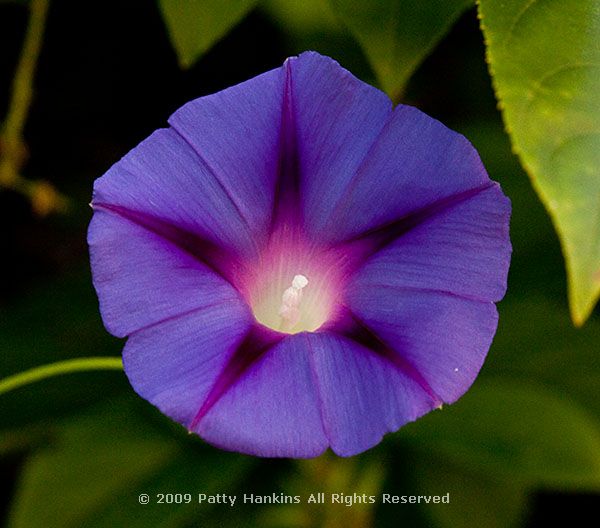 (c) 2009 Patty Hankins
(c) 2009 Patty Hankins
The next morning, I found some wonderful pink morning glories growing along the side of the road on the Blue Ridge Parkway, just south of Asheville.
 (c) 2009 Patty Hankins
(c) 2009 Patty Hankins
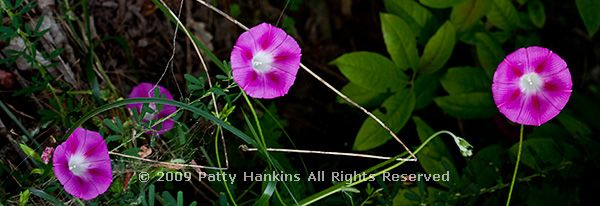 (c) 2009 Patty Hankins
(c) 2009 Patty Hankins
The second member of the Convolvulacaea family I photographed is the Wild Potato Vine (Ipomoea pandurata). The vine grows from an edible tuber-like root that is similar to a sweet potato.
I photographed this group of three wild potato flowers at the North Carolina Arboretum in Asheville.
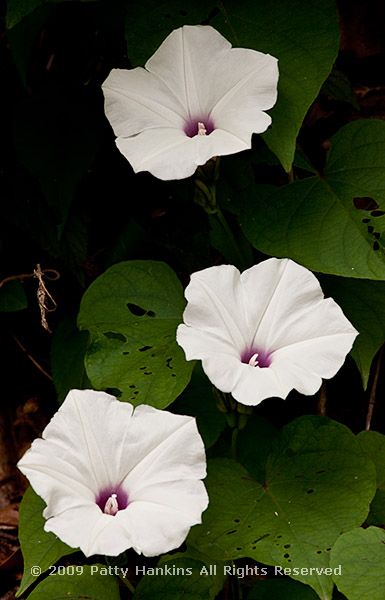 (c) 2009 Patty Hankins
(c) 2009 Patty Hankins
I then found a few more blossoms to photograph at the Metcalf Bottoms Picnic area in the Great Smoky Mountains National Park.
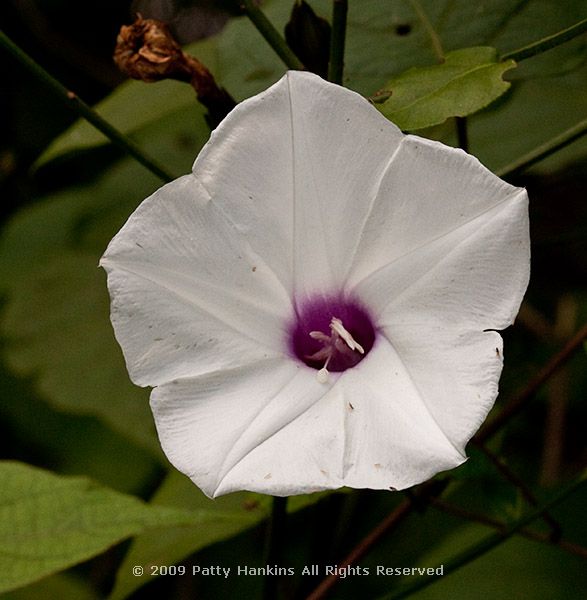 (c) 2009 Patty Hankins
(c) 2009 Patty Hankins
by hankinslawrenceimages | Jul 30, 2009 | Photo Locations
One of my goals for my recent trip to the Great Smoky Mountains National Park was to see the elk. In 2001, elk were reintroduced to the Smoky Mountains. The new herd was started with 25 elk from the Land Between the Lakes National Recreation Area. Since then, the herd has grown to almost 100 elk. Most of the elk can be found in the Cataloochee region of the park.
So last Tuesday morning, I was waiting at the gate for the road out to the meadows to open. Within minutes, I saw several large bull elk out in the field! They are incredible to see. Be sure to check out the racks of antlers on these bull elks.
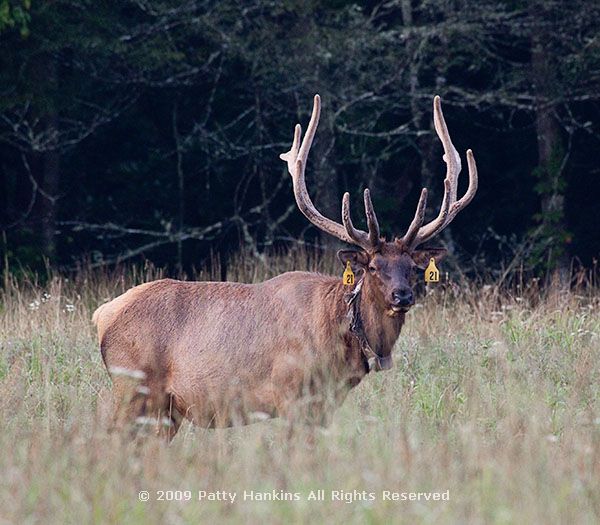
(c) 2009 Patty Hankins
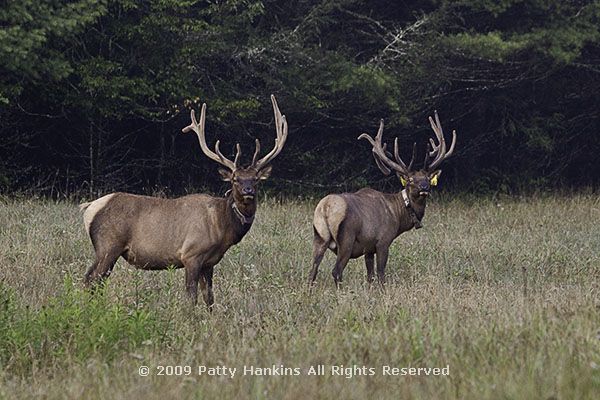 (c) 2009 Patty Hankins
(c) 2009 Patty Hankins
That morning, I also saw a few female elk off in the distance in one of the other fields. I wasn’t able to photograph them.
But I was still really happy with the photos I had taken – and I’d seen the elk in the wild!
The next morning, I was at the Mountain Farm Museum at the Oconaluftee Entrance to the park. As I was photographing Holly, the extremely friendly barn cat, I saw what I thought was the biggest deer I’d ever seen walking across the field. It never occurred to me that it was another elk – since I thought the elk were only at Cataloochee – and this animal didn’t have any eartags or a radio collar.
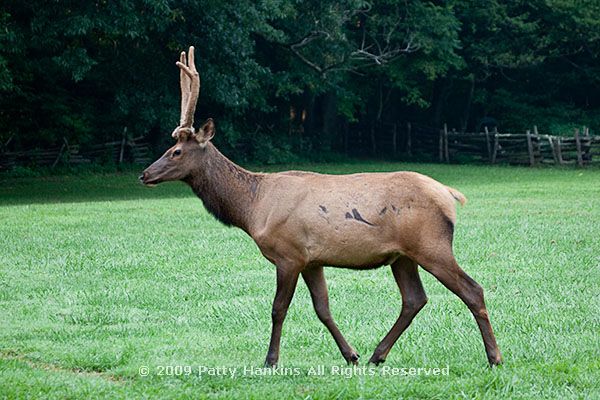 (c) 2009 Patty Hankins
(c) 2009 Patty Hankins
After a while, the “deer” wandered off and eventually came back and entered into the farm area. This next photo should have made it peferctly clear that this wasn’t a large white tailed deer.
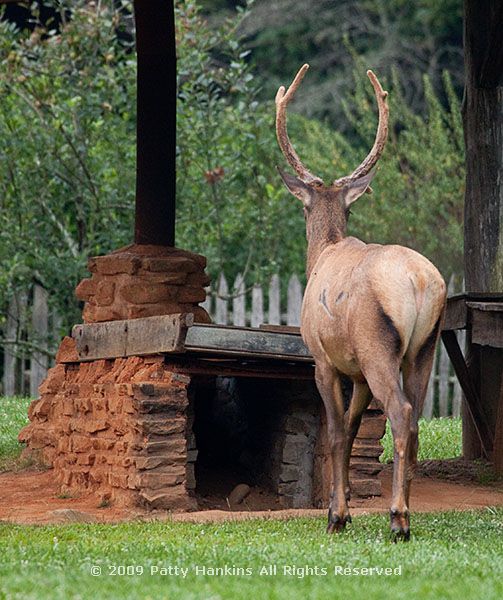 (c) 2009 Patty Hankins
(c) 2009 Patty Hankins
I think was checking out the exhibits at the Mountain Farm Museum. He then wandered over to the fruit trees for a snack.
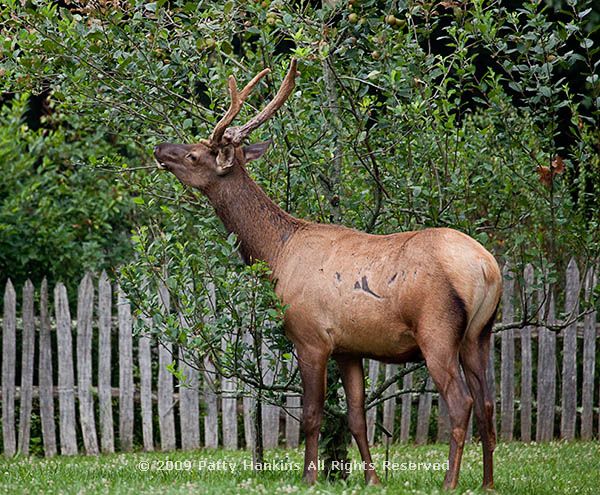 (c) 2009 Patty Hankins
(c) 2009 Patty Hankins
Then he decided it was time to visit the garden for a bite to eat. He has a green leaf from the garden in his mouth in this next photo.
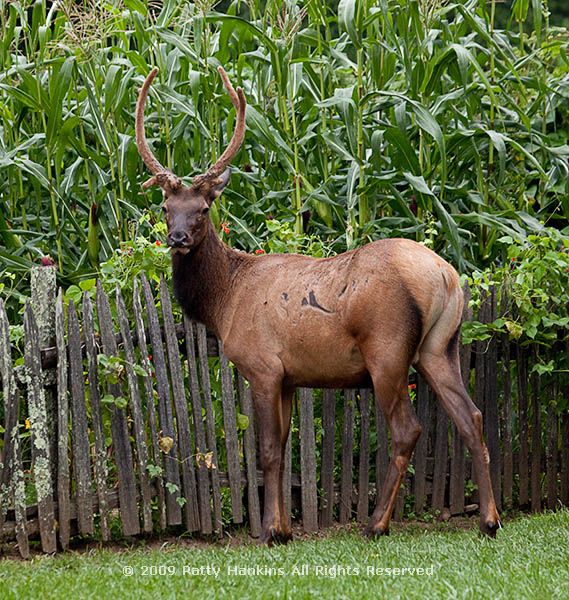 (c) 2009 Patty Hankins
(c) 2009 Patty Hankins
For the next few minutes, the elk grazed at the garden and walked around the Mountain Farm Museum, posing nicely in a few spots.
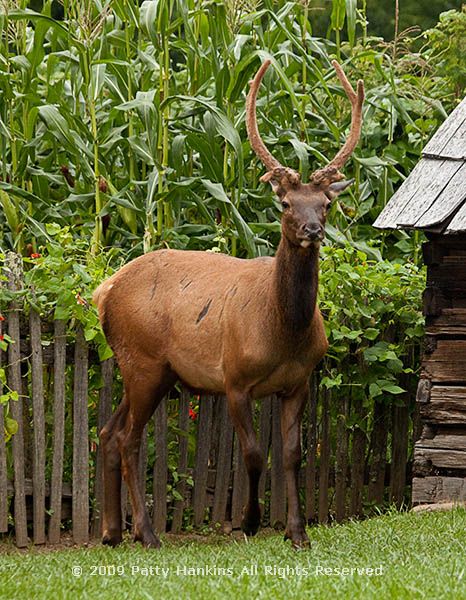 (c) 2009 Patty Hankins
(c) 2009 Patty Hankins
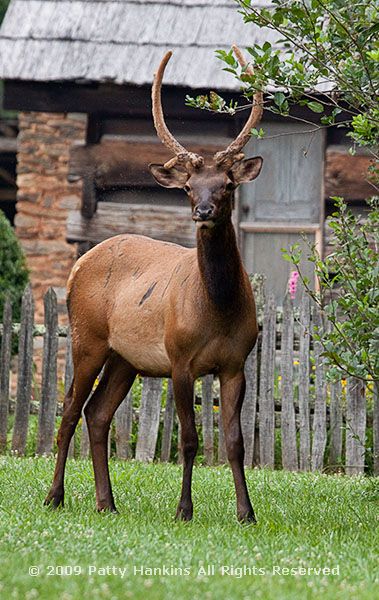 (c) 2009 Patty Hankins
(c) 2009 Patty Hankins
Finally, after a last visit to the fruit trees for a bite to eat, the elk headed off into the woods as more people started arriving at the Mountain Farm Museum.
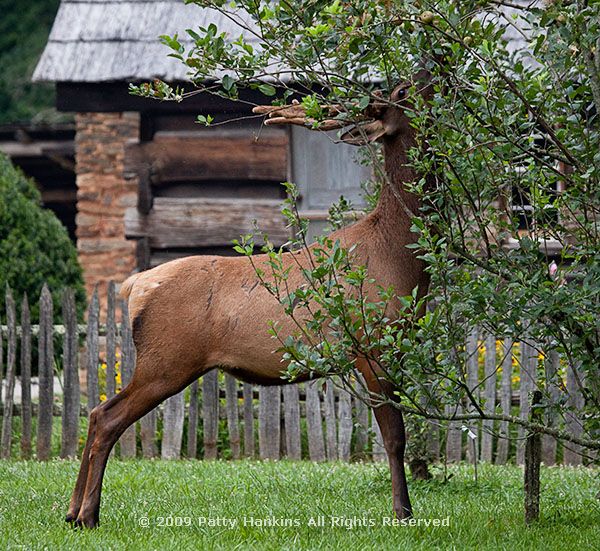 (c) 2009 Patty Hankins
(c) 2009 Patty Hankins
I arrived at the Mountain Farm Museum shortly after 7 AM and was photographing for over an hour. For most of that time, I was the only person there. It was wonderful.
Later that same day, I was at Cades Cove and saw some white tailed deer – and that’s when I began to wonder if I’d really been photographing a large deer that morning. After checking with some people on Twitter and Facebook, I found at that some of the elk have migrated to the Cherokee/Oconaluftee area.
On Thursday, I spoke with one of the park rangers, who confirmed that yes it was an elk I had photographed. She was able to identify him as one of the male yearling elk born last year. She had a bit of a laugh when she saw one of the photos – apparently the elk aren’t supposed to go into the Mountain Farm Museum area – much less eat the fruit off the trees or snack from the garden!
Seeing and photographing the elk at Great Smoky Mountains National Park was amazing. They are beautiful animals. They can also be very dangerous – they are big – and if they see you as a threat you can be seriously injured by an elk. Park regulations require that people stay at least 50 yards away from the elk. All of my photos were taken from a distance using my 100-400mm lens at 400mm. The photos are all crops of the original images.
If you get a chance to visit the Smoky Mountains, be sure to try to see the elk. They are magnificent!
by hankinslawrenceimages | Jul 28, 2009 | Flowers, Wildflowers
I just got back from another wonderful week of photographing wildflowers along the Blue Ridge Parkway and in the Great Smoky Mountains National Park. I came home with about 130 GB of photos – so it’s going to take me a while to get them weeded and edited.
One of the wonderful aspects of spring wildflowers in the Smoky Mountains is the incredible combinations of wildflowers that can be seen growing together in the park. In January, I posted a few photos of wildflower combinations from my 2008 trip. Here are some of my favorite combinations of wildflowers from my April 2009 trip to Tennessee.
First is a hillside of yellow trillium (trillium luteum) and purple phacelia (phacelia bipinnatifida). The Yellow Trillium are found throughout the Smoky Mountains. I found this patch surrounded by purple phacelia along River Road.
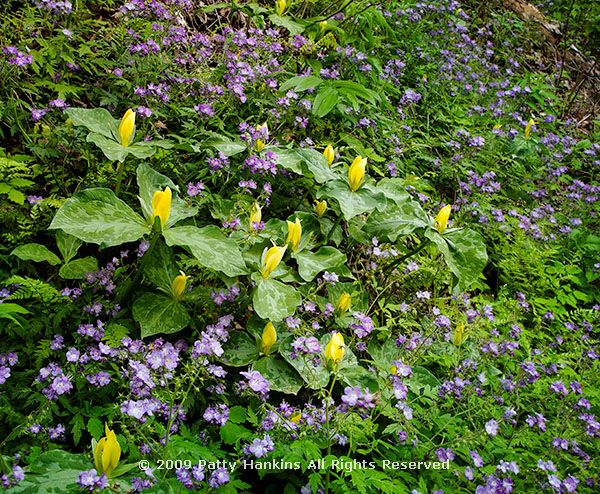 Yellow Trillium and Purple Phacelia (c) 2009 Patty Hankins
Yellow Trillium and Purple Phacelia (c) 2009 Patty Hankins
Next is a patch of crested dwarf irises (iris cristata) and star chickweed (stellaria pubera) around the base of a tree. I photographed these flowers along the side of the road in the Greenbrier section of the Smokies, just before the start of the Old Settlers Trail.
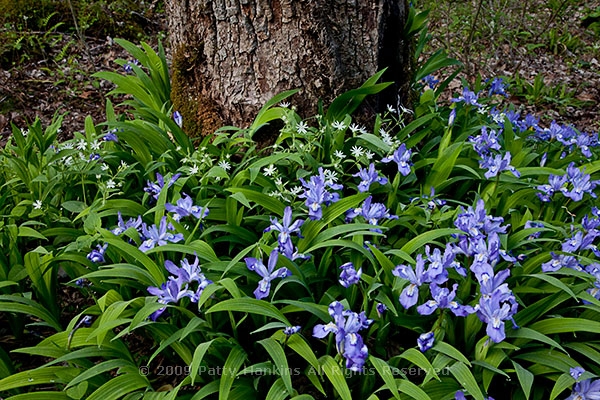 Crested Dwarf Irises and Star Chickweed (c) 2009 Patty Hankins
Crested Dwarf Irises and Star Chickweed (c) 2009 Patty Hankins
Finally, a showy orchis (galearis spectabilis) in front of a patch of crested dwarf irises (iris cristata) along the Ash Hopper Trail.
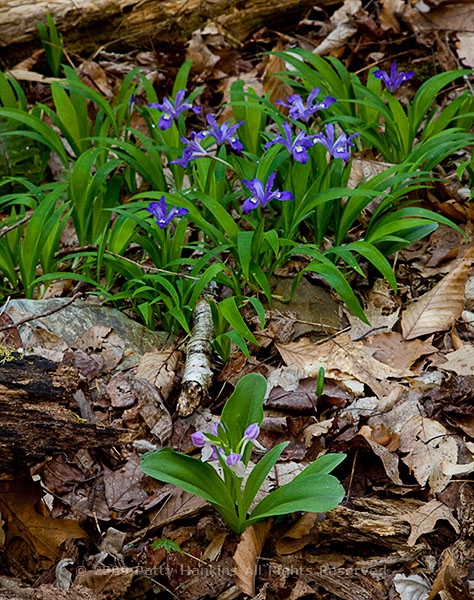 (c) 2009 Patty Hankins
(c) 2009 Patty Hankins
I hope my photos can give you a sense of the incredible beauty of the wildflowers in the Great Smoky Mountains National Park. I’ve fallen totally in love with the wildflowers and the park. And even though I’ve only been home for a couple of days, I’m already trying to figure out when I can get back to what has quickly become my favorite national park.
 Sunrise at Clingman’s Dome, Great Smoky Mountains National Park © 2011 Patty Hankins
Sunrise at Clingman’s Dome, Great Smoky Mountains National Park © 2011 Patty Hankins Little Pigeon River, Great Smoky Mountains National Park © 2011 Patty Hankins
Little Pigeon River, Great Smoky Mountains National Park © 2011 Patty Hankins Canada Goldenrod © 2011 Patty Hankins
Canada Goldenrod © 2011 Patty Hankins







 (c) 2009 Patty Hankins
(c) 2009 Patty Hankins (c) 2009 Patty Hankins
(c) 2009 Patty Hankins (c) 2009 Patty Hankins
(c) 2009 Patty Hankins (c) 2009 Patty Hankins
(c) 2009 Patty Hankins (c) 2009 Patty Hankins
(c) 2009 Patty Hankins
 (c) 2009 Patty Hankins
(c) 2009 Patty Hankins (c) 2009 Patty Hankins
(c) 2009 Patty Hankins (c) 2009 Patty Hankins
(c) 2009 Patty Hankins (c) 2009 Patty Hankins
(c) 2009 Patty Hankins (c) 2009 Patty Hankins
(c) 2009 Patty Hankins (c) 2009 Patty Hankins
(c) 2009 Patty Hankins (c) 2009 Patty Hankins
(c) 2009 Patty Hankins (c) 2009 Patty Hankins
(c) 2009 Patty Hankins

 (c) 2009 Patty Hankins
(c) 2009 Patty Hankins